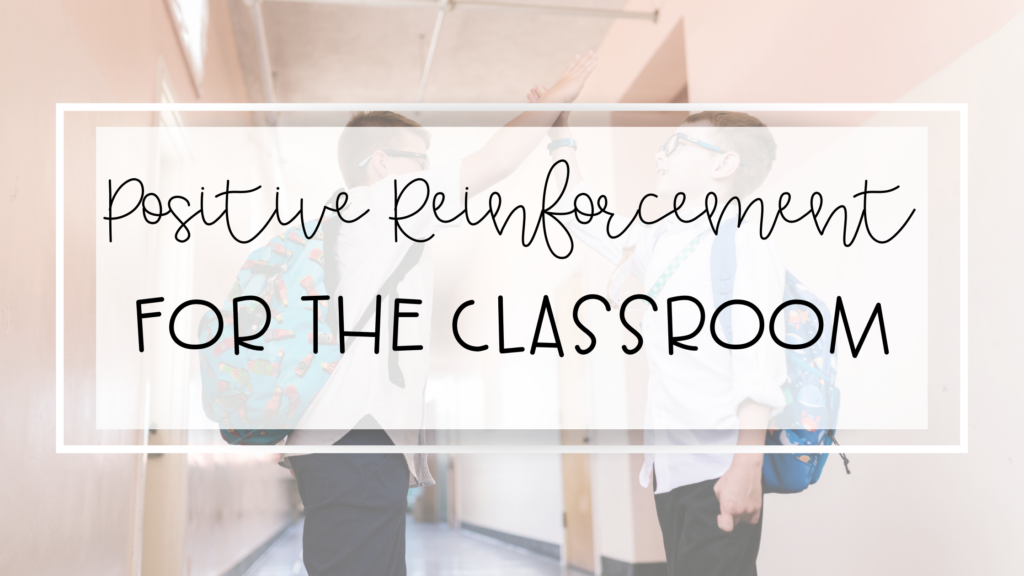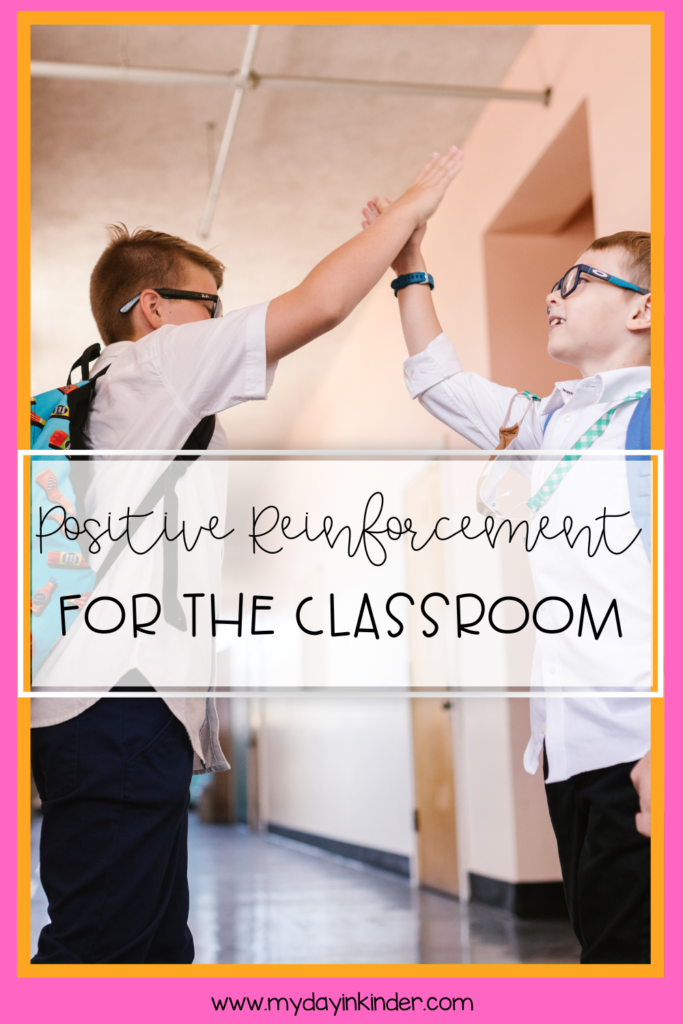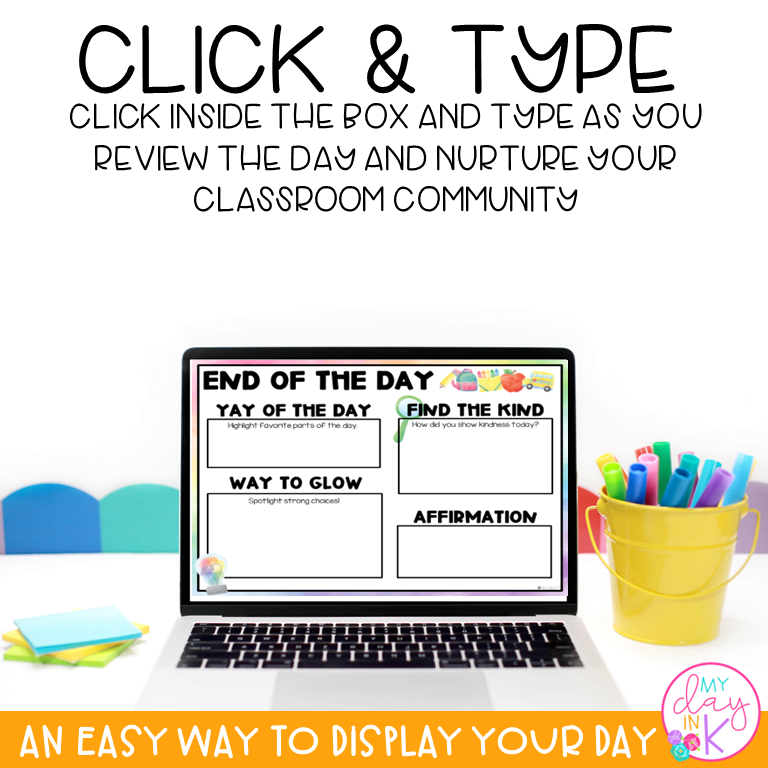5 Examples of Positive Reinforcement in the Classroom
As teachers of K-1 students, we know how important it is to create a positive learning environment where our young learners feel motivated and encouraged. One powerful tool we can use to achieve feeling is positive reinforcement. By focusing on good behavior and using various types of positive reinforcement, we can create a classroom atmosphere where positive student behavior thrives.
Imagine your students raising their hands to volunteer to answer questions, share materials without prompting, or even GASP! helping each other out. These are examples of positive reinforcement in the classroom. When we acknowledge and reward these behaviors, we’re not just celebrating a “great job” but also encouraging our students to repeat these positive actions.

What is Positive Reinforcement in the Classroom?
Positive reinforcement in the classroom is a type of behavior management strategy that involves adding a positive stimulus following a desired behavior. This technique, rooted in operant conditioning, helps increase the likelihood of that behavior being repeated. Positive reinforcement can come in many forms, such as verbal praise, tangible rewards, social reinforcers, or special privileges.
For instance, when a student follows directions promptly and you respond with, “Good job following instructions, Jamie!” you’re providing verbal praise, which is a powerful form of positive reinforcement. The basic idea is that when students associate their positive actions with pleasant outcomes, they are more likely to repeat those actions. This approach encourages students to exhibit positive behavior consistently and helps them develop good habits over time.
Why Positive Reinforcement is Helpful in the Classroom
Using positive reinforcement in the classroom effectively promotes positive student behavior and reduces unwanted behavior. It helps students understand which behaviors are appropriate and appreciated, encouraging them to exhibit these behaviors more frequently. This approach can lead to positive outcomes, such as improved academic performance, enhanced social interactions, and a more harmonious classroom environment.
Positive reinforcement also builds intrinsic motivation, helping students develop a sense of pride and satisfaction in their achievements. When students receive positive feedback for their efforts, they begin to value their hard work and see it as a path to success. This internal motivation is crucial for long-term development and helps students remain engaged and enthusiastic about learning.

Moreover, positive reinforcement is an effective tool for behavior modification. By focusing on positive student behavior, we can minimize disruptive behavior and create a classroom environment that is conducive to learning. This type of reinforcement system not only supports individual students but also benefits the entire class by promoting a culture of respect and cooperation.
Examples of Positive Reinforcement in the Classroom
There are different examples of positive reinforcement strategies you can use in your classroom. Here are some examples:
Verbal Praise
Simple yet powerful, verbal praise like “good job” or “great work” can make a big difference. Be specific about the behavior you’re praising, such as “Great job lining up quietly, Alex!” Specific praise helps students understand exactly what behavior is being recognized and encourages them to repeat it.
Tangible Rewards
Tangible items like stickers, small toys, or even a gold star on a chart can be very motivating for young children. These tangible reinforcements provide a visual and physical acknowledgment of their efforts, making the reward more concrete and memorable.
Social Reinforcers
Social reinforcement includes positive feedback and encouragement from peers. For example, having students clap for a classmate who has done well can boost confidence and encourage positive actions. This type of social reinforcement fosters a supportive classroom community where students cheer each other on.
Special Privileges
Granting special privileges, such as extra free time, being the line leader, or choosing the next classroom activity, can serve as effective reinforcers. These privileges provide students with a sense of autonomy and recognition for their positive behavior.
Token Economies
Implementing a token economy system, where students earn tokens for positive behavior that can be exchanged for a reward, is another great way to encourage desired behavior. This system allows for continuous reinforcement and helps students understand the value of accumulating positive actions.
When to Use Positive Reinforcement
Positive reinforcement can be used throughout the day, but incorporating it into your end-of-the-day routine can be particularly impactful. Here are some fun and effective ways to do this:
Yay of the Day: Recognize a student who has exhibited positive behavior or made significant progress. Announce it to the class and let the student have a moment to shine. This daily recognition helps reinforce positive behavior and gives every student a chance to be celebrated.
Find the Kind: Highlight acts of kindness that happened during the day. Encourage students to share something nice they noticed a classmate doing. This activity promotes social reinforcement and helps students become more aware of positive interactions among their peers.
Way to Glow: Use a “glow” board to write down specific actions students did well. This could include good work on assignments, helping others, or showing positive behavior. Reviewing these actions at the end of the day reinforces the importance of positive behavior and allows students to reflect on their accomplishments.
Make it even easier on yourself and create an “end of the day” slide. Include a “yay of the day,” “find the kind,” and “way to glow” right within the slide! Click Here!
These activities not only reinforce positive behavior but also create a sense of community and appreciation among students. They serve as a daily reminder of the positive outcomes that come from making good choices and encourage students to continue striving for those “great job” moments.
Positive reinforcement is a powerful tool in classroom management, especially for young children. By focusing on and rewarding desired behavior, we can create a positive learning environment that encourages our students to thrive. From verbal praise and tangible rewards to social reinforcers and special privileges, there are many different ways to implement positive reinforcement in your classroom.
So, let’s celebrate those “good jobs,” highlight the “great work,” and make every day a “way to glow” kind of day! Remember, the power of positive reinforcement lies in its ability to motivate, encourage, and shape the behaviors that contribute to a happy and productive classroom.


